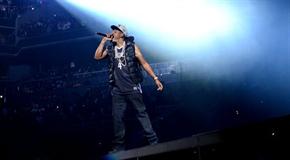Features
Elevator Up!

The venue has a unique load-in system involving a freight elevator and turntable to bring production below street level.
Make that an innovative, yet conventional feature: an elevator for load-in.
Rather than ramps and the prime real estate they require, Barclays uses two elevators to take production trucks from the Dean Street entrance to the arena bowl. The elevators lower vehicles to a turntable that is 80 feet in diameter, holds 100,000 pounds and rotates 360 degrees within four minutes.
Since opening in September, the arena has hosted hockey and basketball games, family shows, and concerts like Barbra Streisand, Justin Bieber and Jay-Z with few dark nights. It’s uncertain whether truck drivers enjoy the load-in system, but it has obviously worked.
The elevators were a necessity, considering the building design and location.
“Since we are an urban site, it was programmatically important,” Bob Sanna, exec VP for developer FCRC, told Pollstar. The arena is located near several subway lines, and developers wanted pedestrians to see into the building – through the tall glass of the main concourse, and glimpse some of the lights and action coming from the events below street level.
But getting trucks and broadcast vehicles down to the bowl would normally require lengthy ramps, which were considered before the original design by Frank Gehry was abandoned and the economy tumbled.
“I’ve worked on other buildings in the city that have truck elevators and, somewhere along the line, we got the notion,” Sanna said. “Truck elevators can take 18-wheel vehicles, the largest you can bring onto a New York City street. Because it’s tight, we couldn’t drive a tractor/trailer around the event level of the building.
“To solve that problem, we took an old-fashioned technology, the turntable – one that you might see in a rail yard. The 18-wheeler can pull in, head first, so there’s no backing up on the street. They negotiate down to the event level. When they come out of the truck elevator they immediately drive onto the turntable, and the turntable rotates 360 degrees, so we can orient the truck to a very tight loading berth. There are four loading berths and space for six to eight broadcast trucks. Then they have the opportunity to drive right out to the event level.”
Arena executives had to be convinced it was a good idea, Sanna said, but he hopes there will soon come a day where other developers will visit the loading dock for their own projects.
“I’m not an arena operator but, my goodness, the change in that building is phenomenal,” he said. “We had eight Jay-Z concerts, turning over to the ice format then back to basketball. The Bieber show came in with 27 trucks and buses.

“It operates on normal and emergency power. We have the ability to rotate it manually. You build the redundancy you need into these systems. We wouldn’t put in one elevator that could potentially break down and you can’t load a show in. but there’s a low probability of losing both at the same time. If there’s a blackout in the city, that’s a different issue, but I think people are becoming comfortable with emergency power and generators so I think the fact that you can create a model and show that the technology works will get a lot more people to embrace the system.”